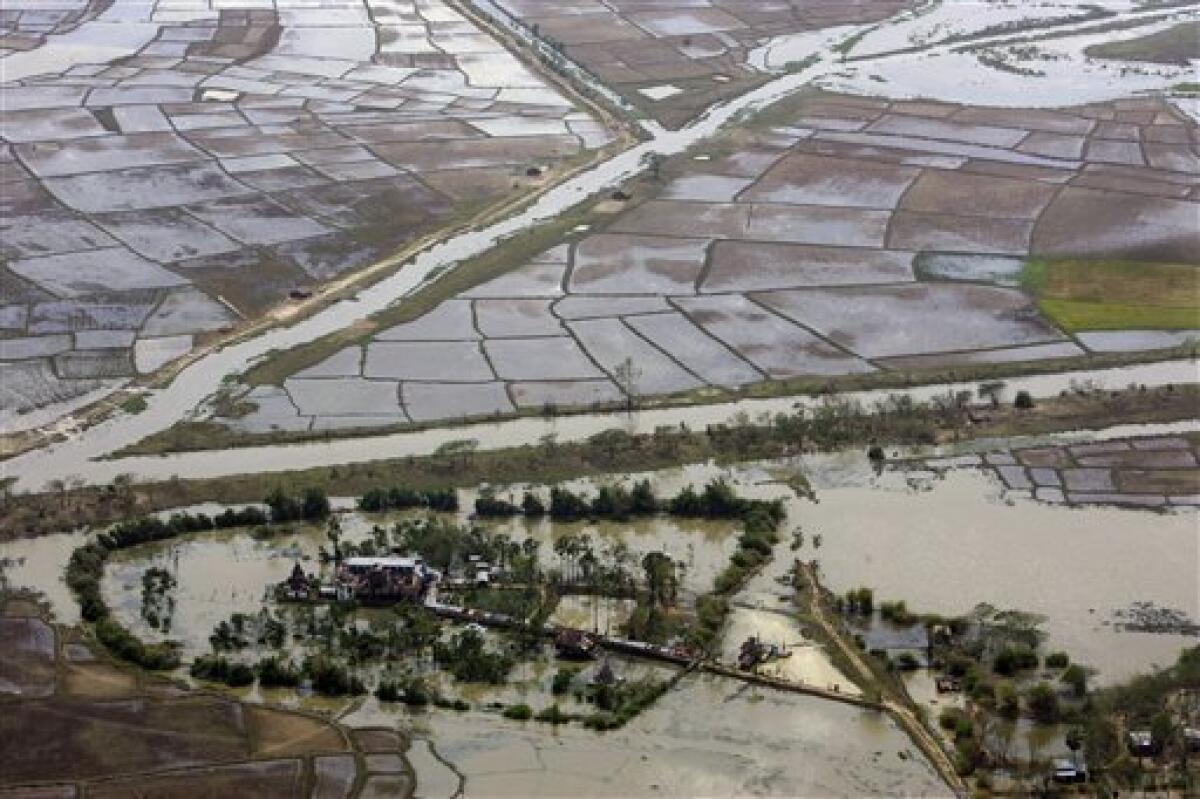Myanmar’s Cyclone Nargis survivors still need help

The monsoons are due any day now, and for the hundreds of villagers with fresh memories of last year’s deadly Cyclone Nargis, an emergency shelter that opened Saturday was yet another reminder that their huts – and their lives – remain fragile.
“How are we going to survive if another strong wind comes?” said Hla Thin, who clung to a coconut tree with her husband on May 2, 2008, when Nargis whipped through and wiped out their former home. “It was so dark and the sound of the water and wind was so terrifying. We heard people calling for help.”
Nargis crashed into Myanmar’s southwestern coast in the middle of the night, sweeping away entire farming villages and killing nearly 140,000 people, and 12 months on people in some of the hardest-hit and most isolated areas are still suffering.
“We have no solutions and no help,” said Hla Thin, a 38-year-old farmer. She used to scrape by on rice farming but now has no money to hire farm hands, no seeds for planting and expects to miss the planting season already under way. “My husband has contemplated suicide rather than face the difficulties ahead.”
The cyclone churned for two days and sent tidal surges as high as 12 feet (3 1/2 meters) some 25 miles (40 kilometers) inland. It was the worst natural disaster Myanmar has ever seen and one of the deadliest in recorded history.
Most of the dead were in the low-lying Irrawaddy delta, the country’s once-fertile rice-growing region on the southwestern coast, where tens of thousands of farm families sleeping in rickety shacks barely above sea level were swept to their deaths.
The sea water that surged through the region inundated water wells and many survivors still lack clean drinking water. The waves also turned almost 2 million acres (800,000 hectares) of Myanmar’s most fertile rice paddies into salt-contaminated wastelands.
Humanitarian agencies say 90 percent of the survivors have been provided with food, clean drinking water and basic shelter needs. But hundreds of thousands remain without decent jobs and proper housing, leaving them vulnerable to the coming monsoon rains and little to lift them out of poverty.
“Shelter is probably the number one challenge or difficulty faced by hundreds of thousands of families across the delta,” said Paul Risley, a spokesman for the U.N.’s World Food Program, which expects to provide food rations for the rest of the year to at least 350,000 survivors.
The Thin family was among the hundreds who attended the opening of the delta’s first cyclone shelter Saturday in the village of Tha Gyar Hin Oh, at the mouth of the Pyapone river, which opens into the Bay of Bengal. The shelter, sponsored by private donors, can hold 1,500 people from several surrounding villages.
Like many parts of the delta, their village is accessible only by boat. Residents say they received food and other assistance after the cyclone but that it stopped coming months ago and they desperately need more.
Foreign governments and charities provided $315 million for food aid and emergency assistance in the months after the storm. But aid agencies say hundreds of millions of dollars more are still needed to rebuild the delta’s severely damaged infrastructure and help farmers rebuild their lives.
Thaung Ko, a 37-year-old laborer from a nearby village, says he can’t find work, which means his family doesn’t eat very often.
“Before the cyclone we could eat at least two meals a day,” he said. “Now sometimes we eat once around 2 p.m.”
Myanmar’s secretive military regime denied foreign aid agencies access to the delta in the initial weeks that followed the disaster, but relented after global condemnation. Yet the junta punished civilians, especially pro-democracy activists, who rushed to provide aid without the military’s permission.
At least 21 people remain imprisoned for providing cyclone aid and “shining a spotlight on government indifference to Cyclone Nargis survivors,” Human Rights Watch said in a statement Friday. They are serving prison terms ranging from two to 35 years.
People across Myanmar marked the storm’s one-year anniversary with quiet remembrance and prayer, but the junta held no official ceremonies to commemorate the disaster. The state-controlled New Light of Myanmar newspaper did not mention the cyclone in its 16-page edition Saturday.
“My sister and brother died saving my parents, and my life without them is never the same,” said Hlaing Bwa, a 34-year-old fisherman, who lives in Thaunglay village in Haing Gyi island where the cyclone first made landfall before pummeling the mainland. “We cannot bring them back, but we will pray for them.”